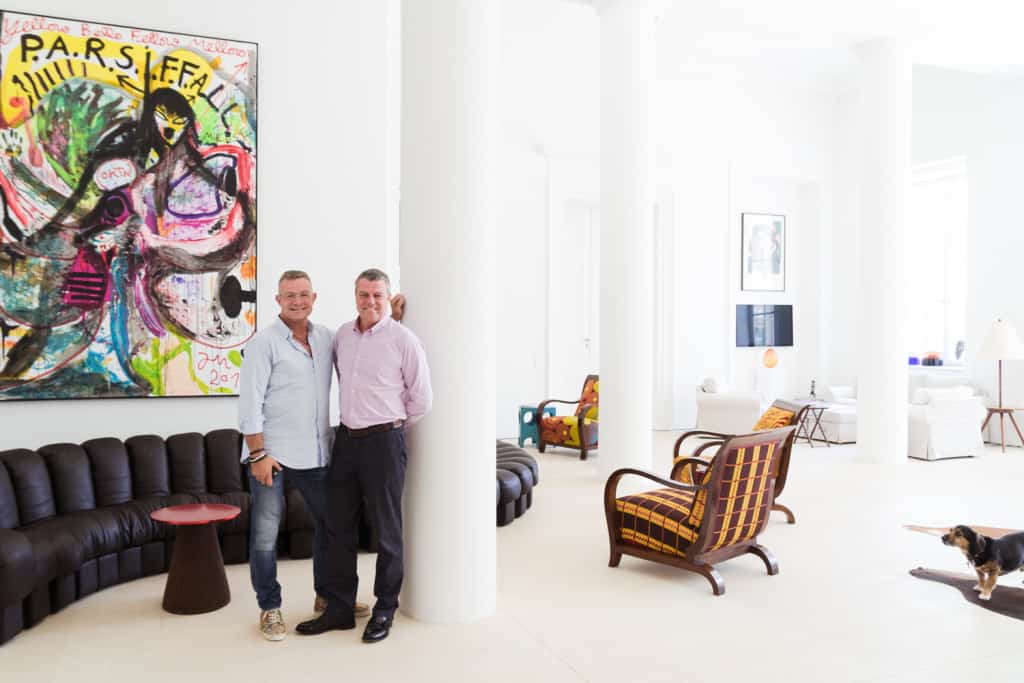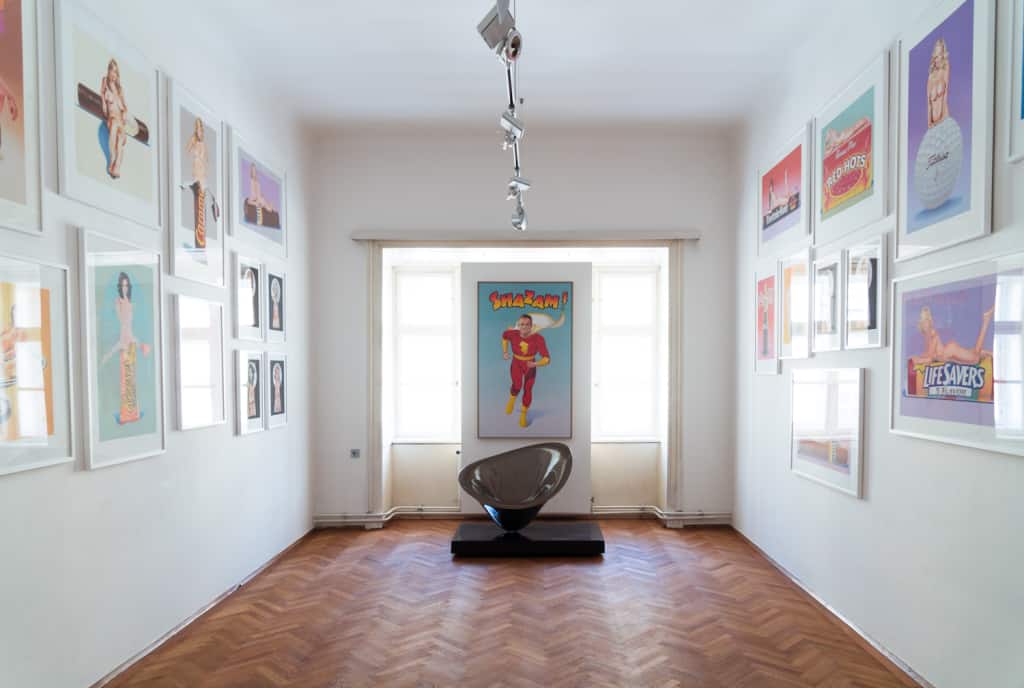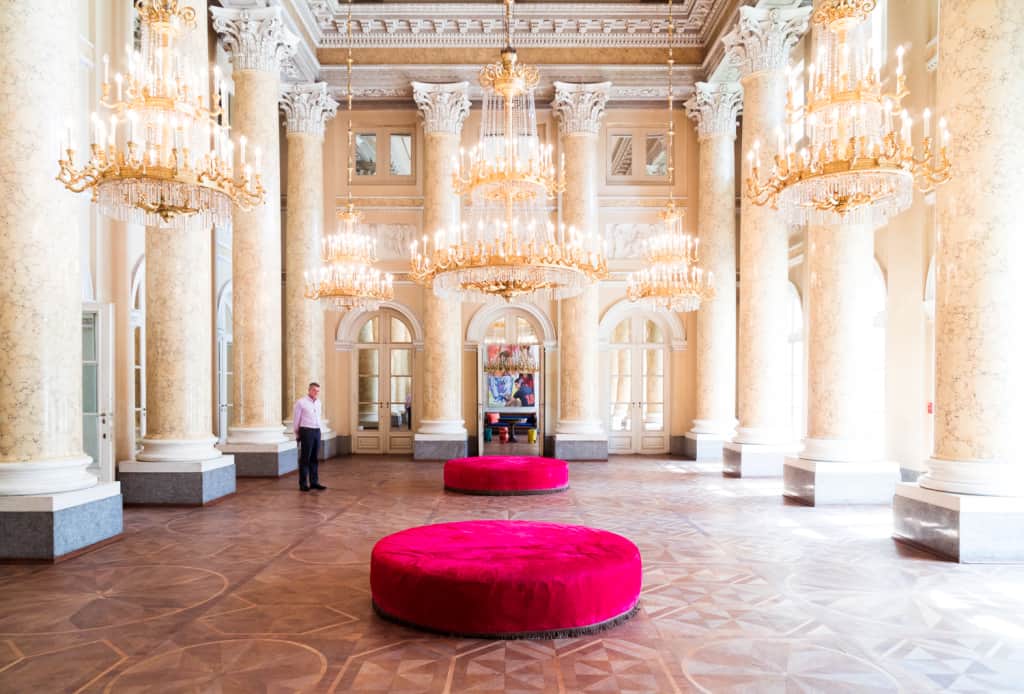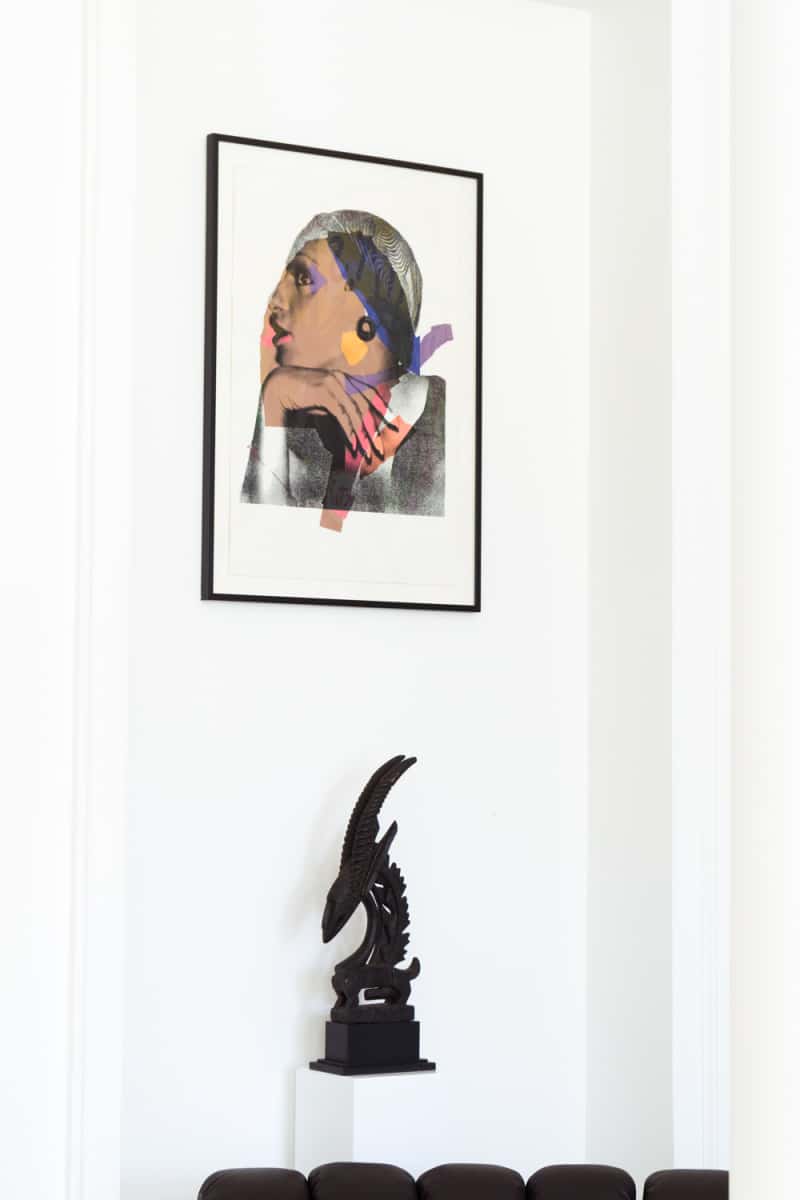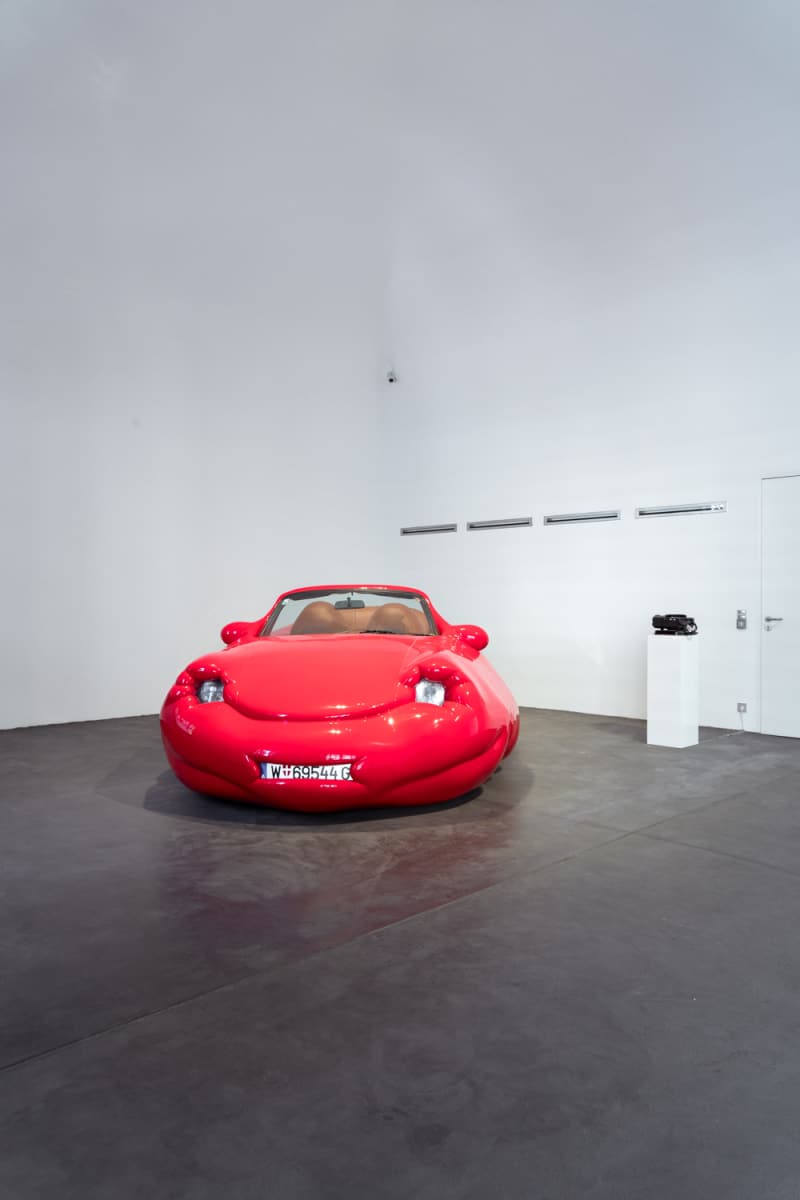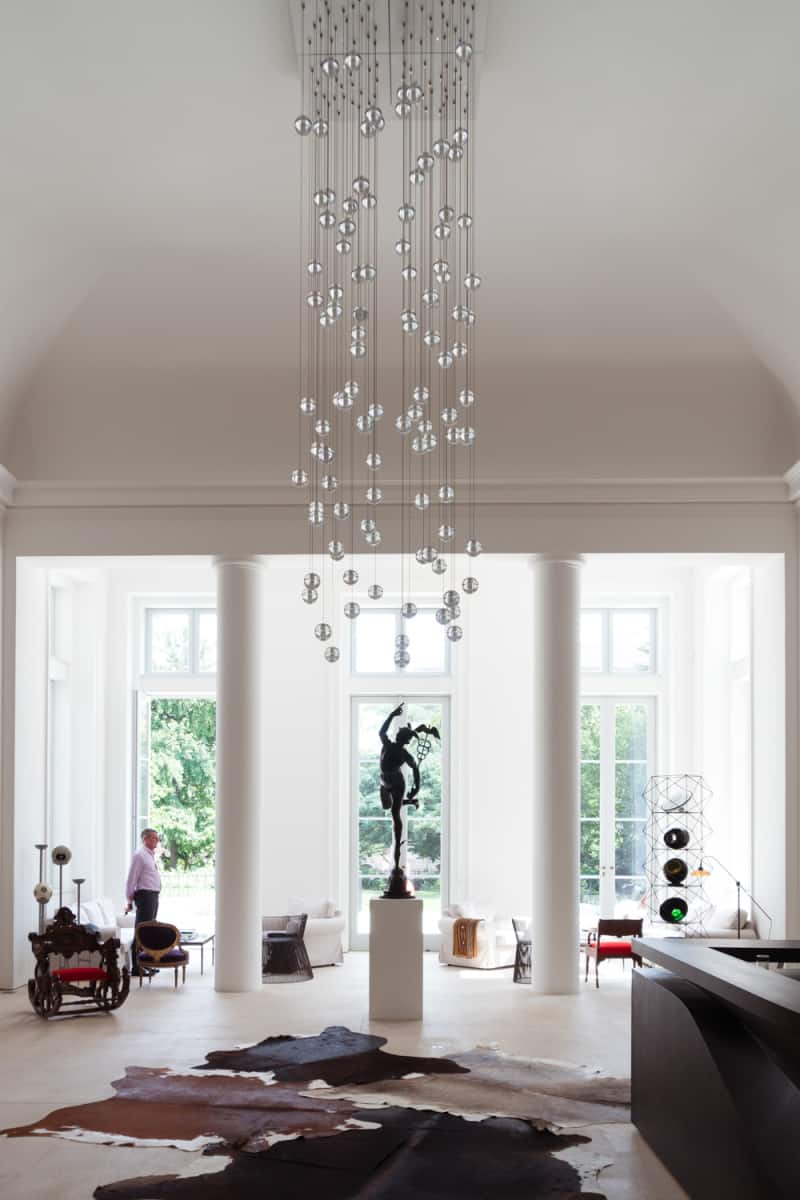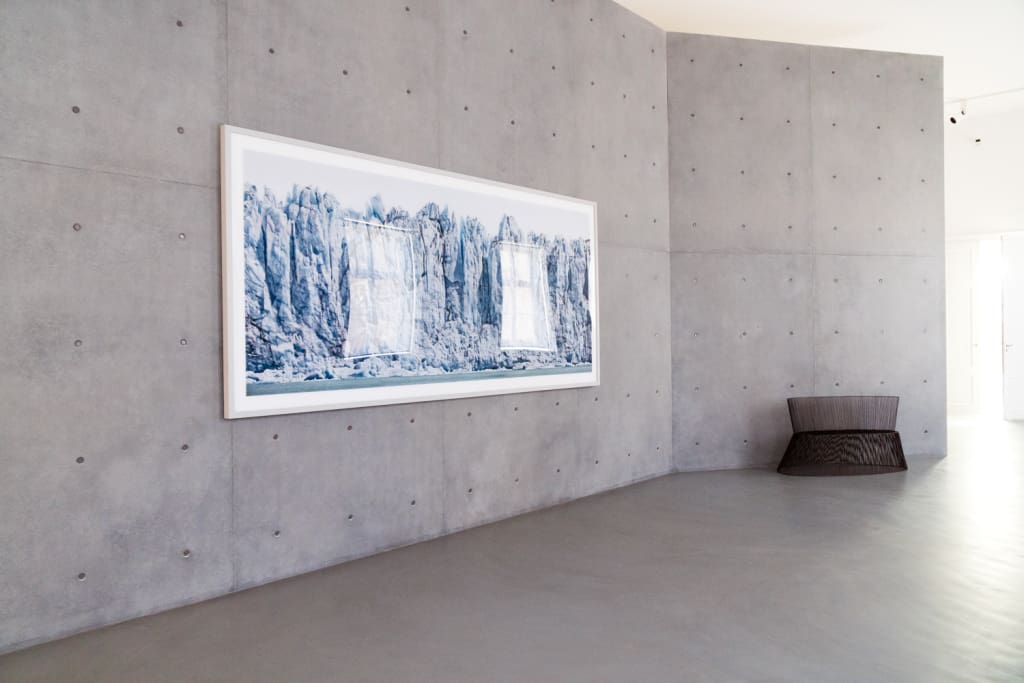Collection SANZIANY, at the Palais Rasumofsky, is one of the biggest private museums in Austria. Available by appointment only, it is located at Landstrasse in Vienna’s third district. Adrian Riklin and his partner Antonis Stachel share their home with more than 2.000 works of art and are famous for the most entertaining guided tours! Learn how it all started and find out what the couple thinks about the local art scene.
Kris Kulakova: How did your collection start?
Adrian: It all started roughly 28 years ago, when we began decorating our apartment. Then, step by step, we started to buy more and more pieces, which we could not hang on the walls anymore…
Toni: We have been together for 28 years now. Pretty soon after we got together, we bought our first painting. It was quite mediocre art, but we were very enthusiastic. Slowly we developed into serious collectors, learning by doing.
K.: Was there a turning point when you realized you were serious collectors?
T: The turning point was when we started to rent a huge apartment just to hang extra paintings, making special invitations to present an artist.
K.: What is collecting to you? Is it a necessity, an obsession, …?
T: How can I explain this – it’s a mixture. You see certain paintings and photos in a way that you start to build a relationship. It also clearly has something to do with the feeling ‘I want to have it’.

Adrian Riklin and Antonis Stachel collection
K.: You collect art and chairs. Or is there anything else?
A: Tony also collects shoes… We are no hoarders. For me, it’s also very important to throw things away. I once threw away three artworks, because I thought it was just pieces of paper (laughs). There are also certain pieces we know, we will never exhibit…
K.: Why did you buy them in the first place?
A: Sometimes senseless, if, for example, there was an artist present who had no money, and then what are you going to do… We also get a lot of presents.
T: Jeff Koons once said that museums are dead places without people in it. Art needs to be seen to have a function.
A: At one point, everything we bought went to the storage unopened. That’s why around ten years ago, we started slowing down with collecting.
T: We are so lucky and privileged to be able to acquire this house. It’s a dream come true! Lots of people have to build their own museums – but this was presented to us on a silver platter. It’s not empty rooms filled with paintings, there’s also design and at least the illusion of lived-in spaces.
K.: Can you tell me more about the building and its story?
A: In the beginning of 19th century, the Palais Rasumofsky was built for the Russian ambassador. The building itself was also very important for the Viennese Congress, which took place in this time period. During that time, Fürst Rasumofsky was not the ambassador any more, but the envoy of the Tsar of Russia. He was taking part in the negotiations, and nearly every second day, there was a big party in this house. This building was also considered very modern at the time, because of its classic architecture.
When we took over this building, it was a ruin, and, together with architect Johannes Baar-Baarenfels, we totally renovated it. The goal was, on the one hand, for it to be our private museum, but on the other hand, to follow his (Rasumofsky’s) thinking with the restoration, to design something on the limit of technological and modern possibilities.
K.: How do you separate between a museum and private rooms?
A: The museum is the much bigger space: one third is private and two-thirds are museum space.
K.: What aspects were important for you when constructing your private space in such a (representative) building?
T: In the beginning, Adrian wanted to live in the old part. But he’s Swiss, so he’s very keen on perfection. I said, Adrian, do you really want to live in this old house, there will always be something a little …
A: Slightly dirty.
T: You can’t get out 200 years. In the end, I convinced him to build something new on top of the old. Also, the house was completely destroyed by bombs in the Second World War, and was rebuilt in the 50ies very cheaply. That’s why the Federal Monuments Office gave us some freedom when reconstructing it.
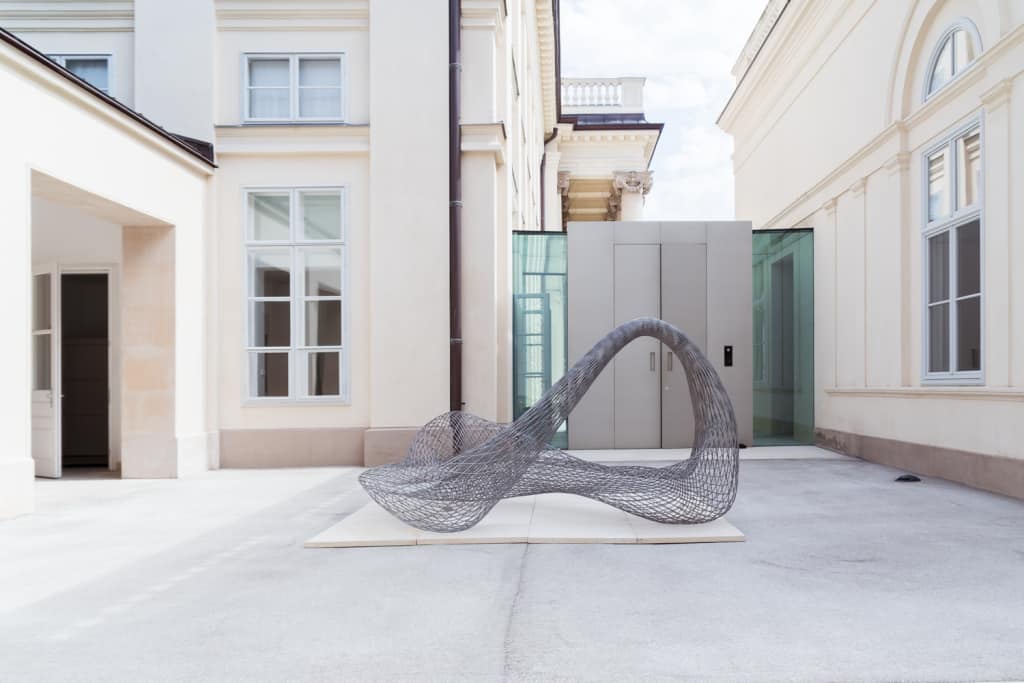
Adrian Riklin and Antonis Stachel collection
K.: Well, the Swiss have the best taste in architecture…
T: We are the perfect collector couple – Adrian has the money and I have the taste (laughs).
A: It’s not true anymore! (laughs)
A: The most important thing for us was to live together with our art and to have a lot of space to show a part of our collection. And secondly – it’s a huge building – we wanted to build private apartments, where you don’t feel the size of the building.
T: What I do sometimes, is taking the longer route through the building, just to see some of the rooms I don’t normally visit. It’s such a privilege to have the keys to a house like this. Sometimes, I turn on the lights, and I go, wow, that’s a beautiful building, I wonder who lives here? Oh, I do! You have to be conscious of how amazing this is. Because if you get used to it, you don’t deserve it any more – that’s my opinion. You should never be ungrateful for these things, especially if you’re as lucky as we are.
K.: How many artworks do you have?
A: More than 2000, works on paper and prints not included.
What was the first artwork that was important for you, for your collection?
A: It was a sculpture by Alfred Hrdlicka called “The Gladiator”.
T: We saw it at an exhibition of the Akademie der Bildenden Künste at Akademiehof and we fell in love with it. We found out that Galerie Hilger represents Hrdlicka, and went there.
A: That was our first important piece. Then Sandro Chia and Keith Haring followed.
K.: Which other artists do you collect?
T: Angel Markos, Oliver Dorfer, Thomas Ruff and Erwin Wurm – we actually have a lot of works by him. We have known him for a very long time, already back then, when he was not that famous. I’m the godfather of his daughter, we share a lot of history, not just from buying his art.
K.: Is it important for you, as collectors, to know the artists personally?
A: We like it very much, but sometimes, when an artist is said to be very rude, we try to not get to know them – because otherwise, we would stop to buy from them. When I look at the work, I also see the artist. We really tried to keep our collection very emotional, and, in a way, private. We never bought art as an investment or sold a work.
K.: What does your collection say about you?
A: I think the collection says a lot about the collectors. The presentation of our collection is very different from others – there’s much more fun in it. We are playing with hanging different artists, and by doing this, the room itself becomes a new art piece. Sometimes, we get some negative feedback from the artists we are combining. They think they’re not well-respected, because we hang a famous artist next to a young one. We also try to make a living space, rather than recreate the atmosphere of the museum, and we are achieving this by combining art with design objects.
Especially when Toni guides a tour through the museum, he jokes and tells stories and anecdotes about the hanging, which is very strong and chaotic.
K.: What else, for you, fills rooms with emotional energy?
T: First of all – in the field of design – I have a passion for chairs. Chairs, like portraits, are items that have been with us for thousands of years. For me, all chairs have personalities.
A: I give you a typical example of us on a tour, which happened two or three times, where you see old chairs, followed by smaller chairs, and Toni would always say ‘These are the grandparents, these are the children, …
K.: How often do you re-hang?
A: We try to keep the habit of three new rooms a month. In autumn, we have to work a little bit harder, because we always make a bigger re-hanging before viennacontemporary.
K.: How do you feel the Viennese art scene has developed in recent years? While your collection was growing, what happened in the art scene?
A: I think, overall, the Viennese art scene has improved a lot. The Viennese gallerists used to be jealous of each other, but then they saw that it would help everybody, if they cooperated. That was one reason why Vienna’s art scene was not as good as it could be, even though there are really a lot of exciting artists here. The other story is that Austrian artists – with some exceptions – are lazy. Lazy not about painting, but about marketing their work, doing PR, visiting a lot of museums and fighting to get a small slot in the museum. Many Austrian artists think that’s the gallerists’ job. But worldwide, when artists are not working, they will not be successful. You can see this big difference with Erwin Wurm, who is really successful now: He has always organized everything by himself.
K.: Can you name some of the younger-generation artists you are interested in?
T: Ben Reyer for example – he’s so cute, right? (laughs) That’s not why we buy his art, of course. And for street artists, we like Sebastian Schager.
K.: Do you follow a plan when buying artworks?
A: Once a year, we write down a little list of what could be of interest for us – that’s mostly initiated by me, the man of thousands list. But many buys just happen randomly.
T: One of the last works we bought was by a Bulgarian artist called Michail Michailov. He made a bed in form of a cross. I think that was such a genius and simple idea. We are going to put it in the former bedroom of the prince. Getting up [as] the resurrection is such a funny idea.
A: That’s right. But I’d say we have to get a little bit more careful not to buy too many new artists and try to keep a part of the budget for artists we already have in our collection and love. We’re travelling quite a lot to different exhibitions and art fairs, and have nearly all catalogues of auction houses.
A: We’re not interested in the mainstream, the big names, but there you can sometimes find very good additional works by artists we have in our collection, and the price level is mostly very acceptable.
K.: How has your taste in art evolved over time?
A: I’d say we started out with traditional painting and sculptures, followed by photography first seen at the Biennale in Cuba. Then, we were assisted by a gallery owner in Geneva, Pierre Huber. He used to own a very famous gallery, but then displayed some political incorrectness in the art scene …
T: …I would call it political errors. He became a persona non grata…
A: … and closed the gallery. But he brought the so-called American photographers to Europe. From Cindy Sherman to Nan Goldin… He also was one of the first to deal with Chinese art.

Adrian Riklin and Antonis Stachel collection
K.: Who was your best art advisor?
A: He was, apart from him we don’t have art advisors.
T: Since we mentioned photography – we’re silent partners at Galerie Hilger, and we actually introduced photography to them, which we’re kind of proud of. We bought this artwork by Angel Markos – we first saw his works at the Biennale in Havanna and then again at the ARCO in Madrid. We bought one installation –a piece that’s hard to sell – and Ernst [Hilger] bought another one. We brought these two to Art Basel, and it was the first photograph artwork Galerie Hilger has ever sold.
K.: What is your plan for the collection?
A: The collection is partly held in a trust, and partly owned by me. In the end, it will be entirely held in a trust, and the place will be – if the cash flow is as it should be – a private museum.
K.: So you want to make it publicly accessible?
A: Accessible by appointment. Since the building is so protected, there are disadvantages concerning fire policy and security questions. You cannot let people roam about independently, you have to have a guide who takes care of them in case of an accident.
Written by viennacontemporary
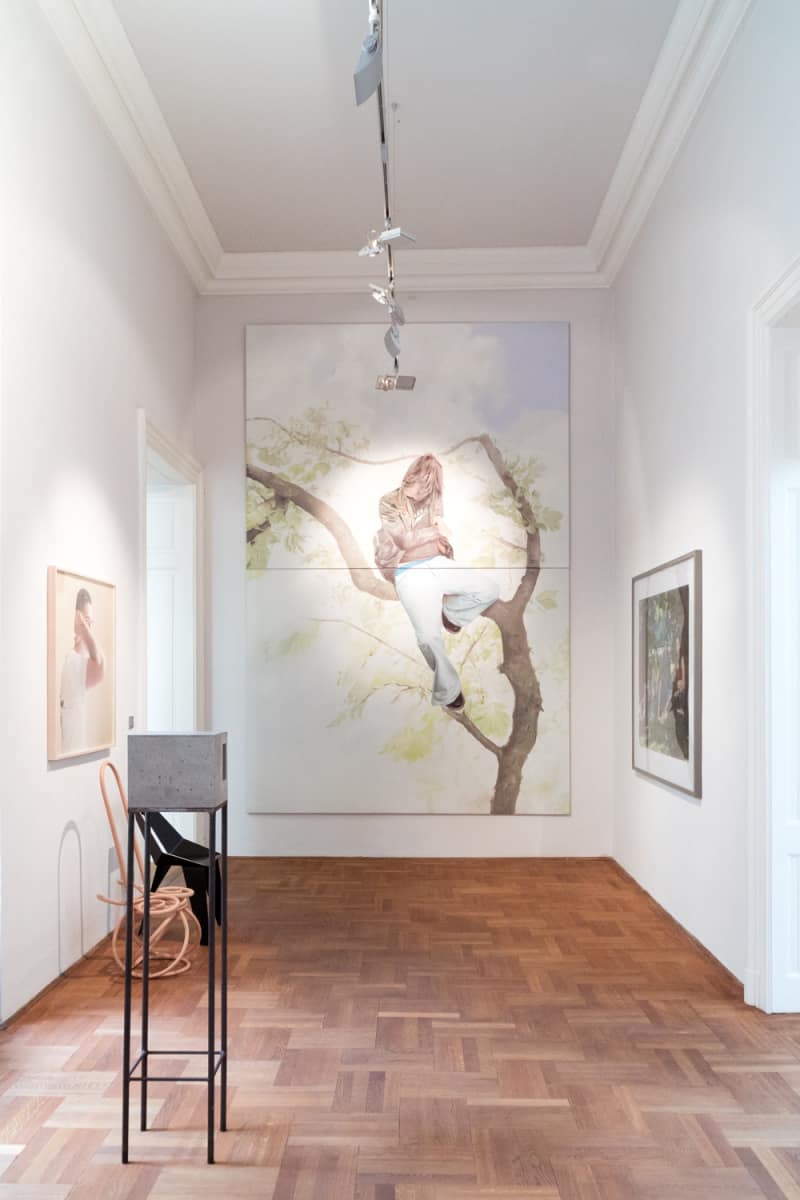
Adrian Riklin and Antonis Stachel collection



